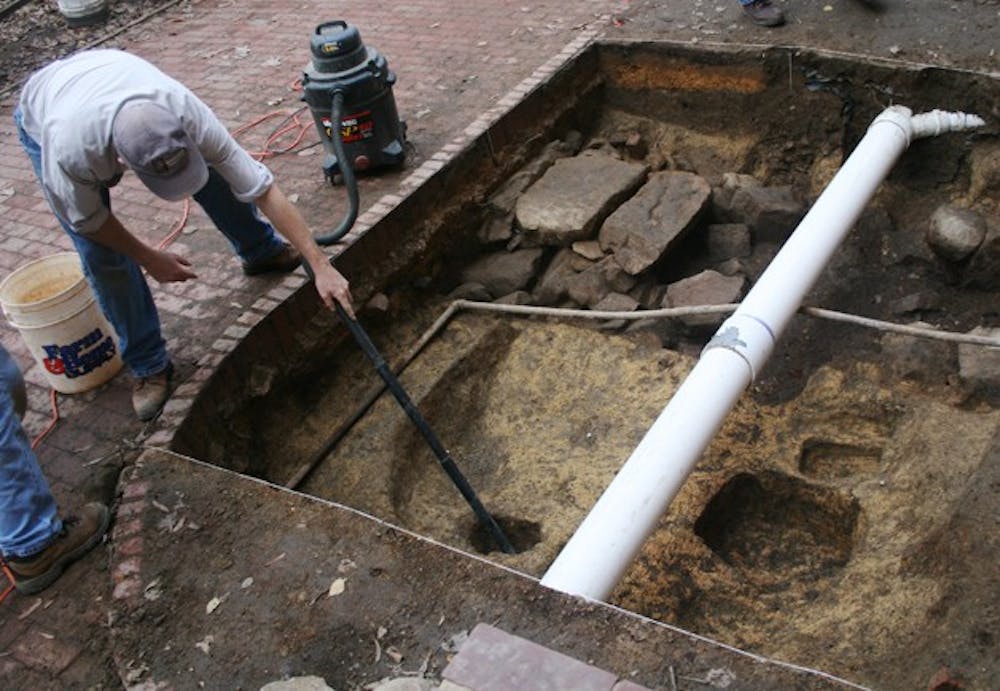What began as the finishing touches to a campus renovation project has shed some light on the early days of the University and the town of Chapel Hill.
UNC archaeologists have wrapped up the excavation of the area in front of Battle, Vance and Pettigrew Halls, discovering a drainage system that predates the oldest recorded sewer system connected to the University.
When renovations to the halls on McCorkle Place ended earlier this semester, workers discovered the remains of antebellum architecture beneath the foundations of the project.
Excavators uncovered a cellar pit from a home that once stood on the property, as well as the remains of a 19th-century drainage system — possibly from a later hotel on the same location.
At first, they believed the findings were remains of a late 18th-century well, said Steve Davis, associate director for research labs of archaeology.
Graduate student Mary Beth Fitts said in an email she was initially disappointed the remains were not a well but was excited to find the drainage system intact, with the original stones still in place.
The system appears to be connected to an even greater sewer system buried beneath McCorkle Place, Davis said.
He said the system, which dates back to at least the 1830s, paints a picture of a progressive university pursuing substantial infrastructure projects early in its history.
David Cranford, a graduate student volunteer on the project, said in an email that the drain system likely represents one of the earliest infrastructure projects in Chapel Hill.



